As long as we mere mortals have lived, dragons have been a part of folklore and fantasy worlds. There is something about these enormous winged creatures that seems to catch our imagination. In shows like Game of Thrones and the How to Train your Dragon series, numerous filmmakers have attempted to convey the essence of dragons. However, Dragons Blood is the only series that does a fantastic job of presenting these avian animals as the epoch-defining, dormant, and potent beings that they are.
Netflix’s Dragon Blood, which is based on the video game DOTA 2 by Valve, is set in a fantastical world where dragons wander freely, devouring humans and obliterating entire towns and villages at their whim. Here is a fast crash course on all the dragons one might face in the Dragons Blood Universe. This series also depicts eight different sorts of dragons and explains the intricate lore behind them.
What is the Eldwurm Lore?
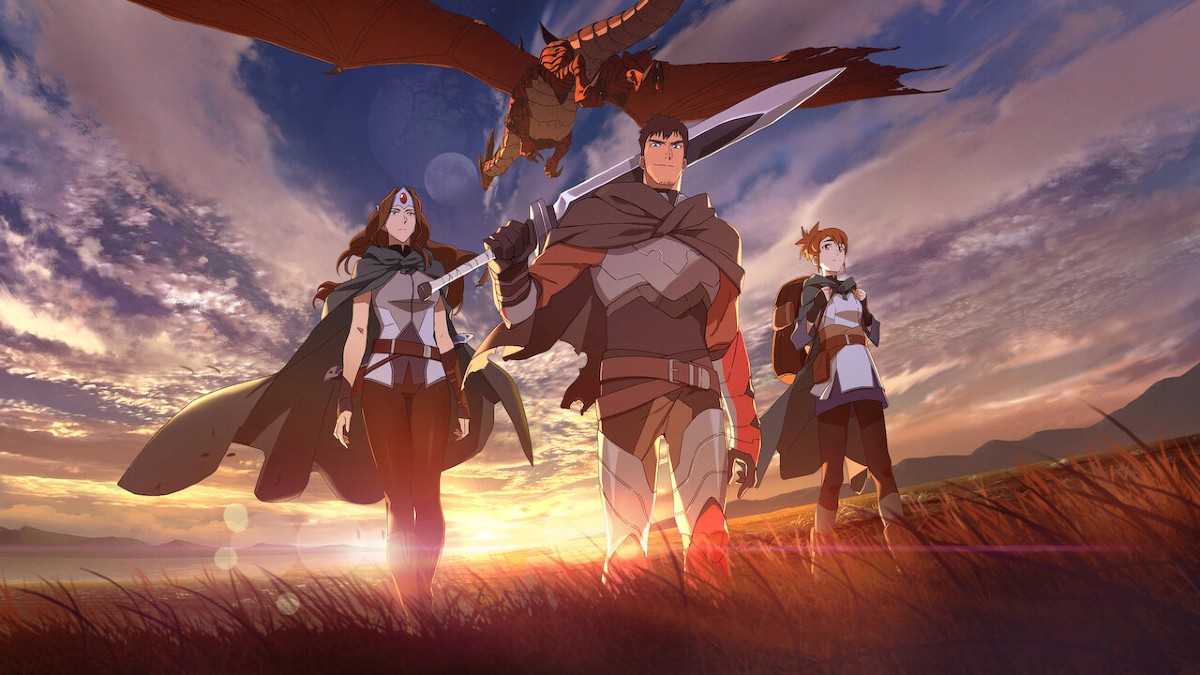
According to the mythology of the fantasy universe where the series is set, there was only the Primordial Mind at the beginning of time, and all of creation— planets, stars, concepts of life and death, order and chaos— was born from this same Primordial Mind.
The Mind gradually split apart over time, fractured in many ways, and turned against itself. It broke into two pieces, The Radiant and the Dire, thought and action, and they engaged in a fierce conflict over creation that nothing could reconcile. Everyone was affected by the chaos of the infinite as a result of this. Gods, monsters, men, and their kings all looked to the shattered Primordial Mind for knowledge and drew strength from its indescribable chaos.
In spite of this, 8 Elder dragons, also known as Eldwurms, were created, each of which stood in for a different aspect of creation. These so-called “eight pillars of creation” higher-dimensional entities are nothing more than emanations of the real truth. What we see, feel, touch, conceive, and recognise as a part of the “real shape” of infinity are all things that lower-dimensional entities can only partially understand.
Regular people can only see the shadow of the genuine existence, as shown by the fact that Slyrak would only appear to an entity from a lower dimension as fire. In fact, the 8 Eldwurms may not even be dragons at all, but rather flesh illusions, which are aware of their actual selves, even if they are using these dragons’ physical forms as avatars. However, they manifest as dragons, which honestly, is cool as hell and we wouldn’t have it any other way!
The eight Eldwurms are thus, the physical manifestations of the actual truth, and not just dragons that resemble gods in those particular elements. They form the framework of reality. However, the scariest aspect is that some beings can change the composition of creation by using these spirits to take any form they like. It is obviously not easy to defeat all of them and obtain their souls, but it is not impossible, as is seen in the series.
Thus, the four fundamental forces and four classical elements that the dragons can control are used to categorise all of the dragons in the Dragon’s Blood story. All the dragons that roam the earth are physical representations of the Eldwurms themselves.
There are dragons for each of the natural elements: Earth, air, water, and fire. There are also void dragons, ionic dragons, luminous dragons, and chaos dragons representing the basic forces. They are further divided into groups according to their ages. The lowest rung on the ladder is the hatchlings who are the youngest, smallest, and weakest of the group.
However, Davion’s squire Bram remarks that even hatchlings may rip a grown man’s face off, demonstrating how vicious they are at any stage. Then we have the eldwurms—the oldest, most enormous, sleepiest, and most powerful dragons, followed by Eldwurms with a capital E, each of which is one of a kind that houses its respective pillar of creation in its soul.
In addition to all this, a cursory glance at these dragons could lead one to believe that they are all unique beings existing in isolation. However, that is not the case. The physical avatar of each Eldwurm within a certain elemental or fundamental species actually represents all dragons within that species.
Keep in mind that they are distinguished from eldwurms, which are simply elderly dragons, and the difference is denoted by the use of a capital “E” for the 8 dragons who possess the souls. The regular eldwurms are merely further incarnations of the enormous big 8 Eldwurms. They lack their own soul as a result, and this prevents them from becoming awake or aware of themselves until an Eldwurm takes on or assumes these soulless bodies.
When an Eldwurm dies, the soul in the dragon’s body simply passes onto another dragon of the same kind, thus showing how these Eldwurms are nothing but physical manifestations of the pillars of creation. Their bodies and physical forms are disposable, while their souls live on forever; therefore, when they die, they are simply reborn.
The Eldwurms make a fair number of appearances in the series, with Slyrak often taking center stage due to his complicated relationship with Davion the Dragon Knight. It must be noted that apart from insane strength, the ability to fly and their control over the elements, they also have regenerative properties in their blood.
Not just that, when Eldwurms die, if they are one of the big eight and harbour one of the souls of the pillars of creation, then the dragon can enter into a blood bond with a human by simultaneously cutting the human as the human strikes them – so that they spill blood together in a weird shared-blood-cult ritual type of way and their souls are bonded.
This allows the human to gain the dragons’ powers along with opening them up to be able to hear the Song of the Thunder. The Song of the Thunder is the way in which the dragons communicate – so the mortal is able to listen to the voices and speak to these ancient creatures. They also refer to humans as ‘little mice’ and well, as far as a size comparison goes, I think they’re being very generous here – I’m glad they don’t refer to humans as cockroaches.
We see almost all of them, perched in a circle that is presumably their meeting ground, when Davion meets the Eldwurms after being bonded with Slyrak. They are shown to be apathetic and untrusting of humans in general, largely wanting to eat Davion. However, they are highly intelligent and wise. The hatchlings and wurmlings are another story, however – they don’t have the souls of creation and thus are just brute beings who live to eat and do so by massacring human settlements.
The 8 Eldwurms and their Wurmlings Explored
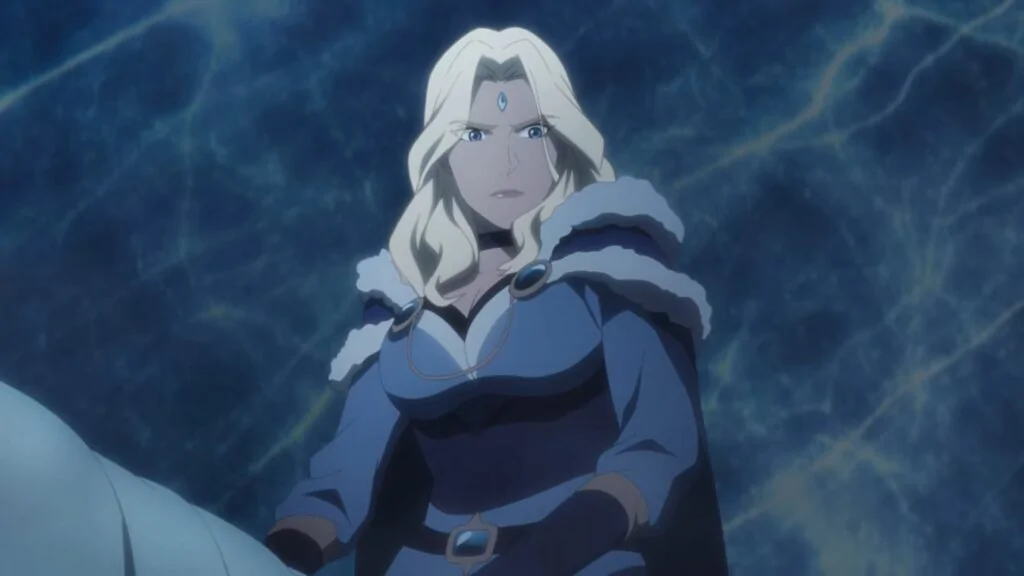
Because of the fact that each Eldwurm is an embodiment of one of the eight elements of the pillars of creation, they each reproduce and generate offspring. How they do it and whether they mate is not known to us mortals, but what we do know is that they lay eggs and little Wurmlings hatch from them. Each Eldwurm gives birth to wurmlings of its own type, carrying on the elemental legacy. Thus, in effect, they ensure that there are 8 different types of dragons that roam the Earth – air, water, fire, Earth, ionic, luminous, void and chaos. Let us take a look at them.
Aethrak, the Air Eldwurm
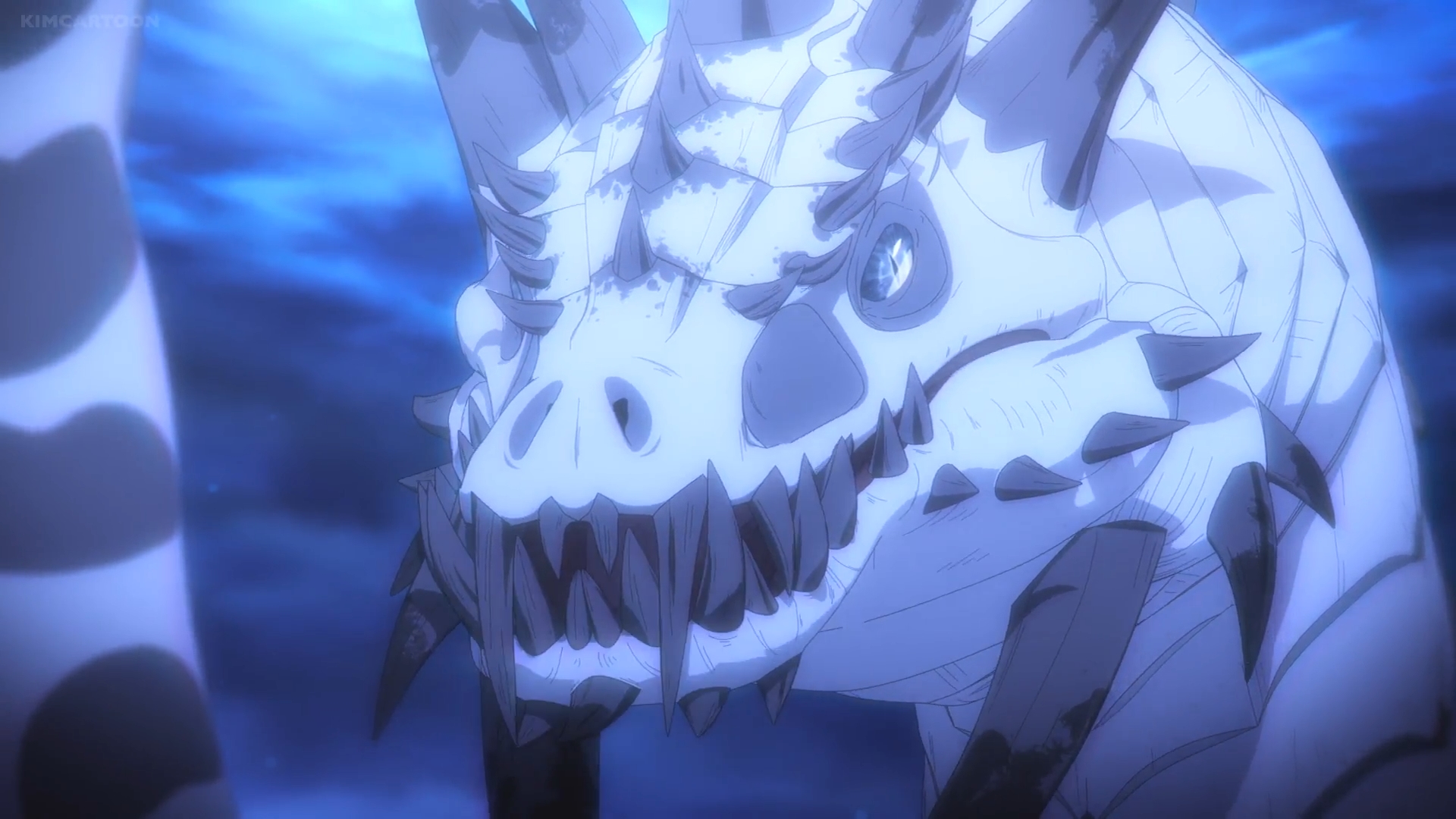
The Air Eldwurm in Dota: Dragon’s Blood is named Aethrak. The term “aether” is where the name Aethrak derived from. Latin aether is a synonym for “air” or “atmosphere.” As a result, aether can refer to the atmosphere or air above the ground as well as other related connotations alluding to the upper atmosphere that is less palpable, or the divine air that the Greek gods inhale in their celestial realm.
One-third of the energy that makes up a storm is made up of the element of wind, which Aethrak and the air dragons can control. When flying, they can use wind blasts to accelerate their already amazing speed through the air. When they pass through enclosed areas, like a cave, they can produce wind gusts that typically serve as a warning of their existence.
Aethrak and the other air dragons are characterised by their eagle-like body parts. They feature large wings that fold while diving, five-pointed talons at the tip of each foot, sleek spikes around their bodies, and five sharp claws. Wyrmlings appear to have spikes on their snouts that mimic beaks, but as they mature into older eldwurms, these spikes begin to disappear.
Every air dragon is a dangerous carnivore. When hunting, they soar at such great heights that they can see the clouds while having a clear view of their prey up close. They follow prey that exhibits any evidence of movement rather than those that remain static, because they track their prey by movement.
Aethrak is immortal, like all Eldwurms, as in he can take on new bodies as long as one is available for his soul to inhabit. After passing away, he locates the next oldest dragon of his species and infuses their soulless form with his own soul. However, it is said that they become tougher in both physical prowess and their corresponding elemental powers as they grow and age, rather than withering into weaker dragons.
Byssrak, the Void Eldwurm
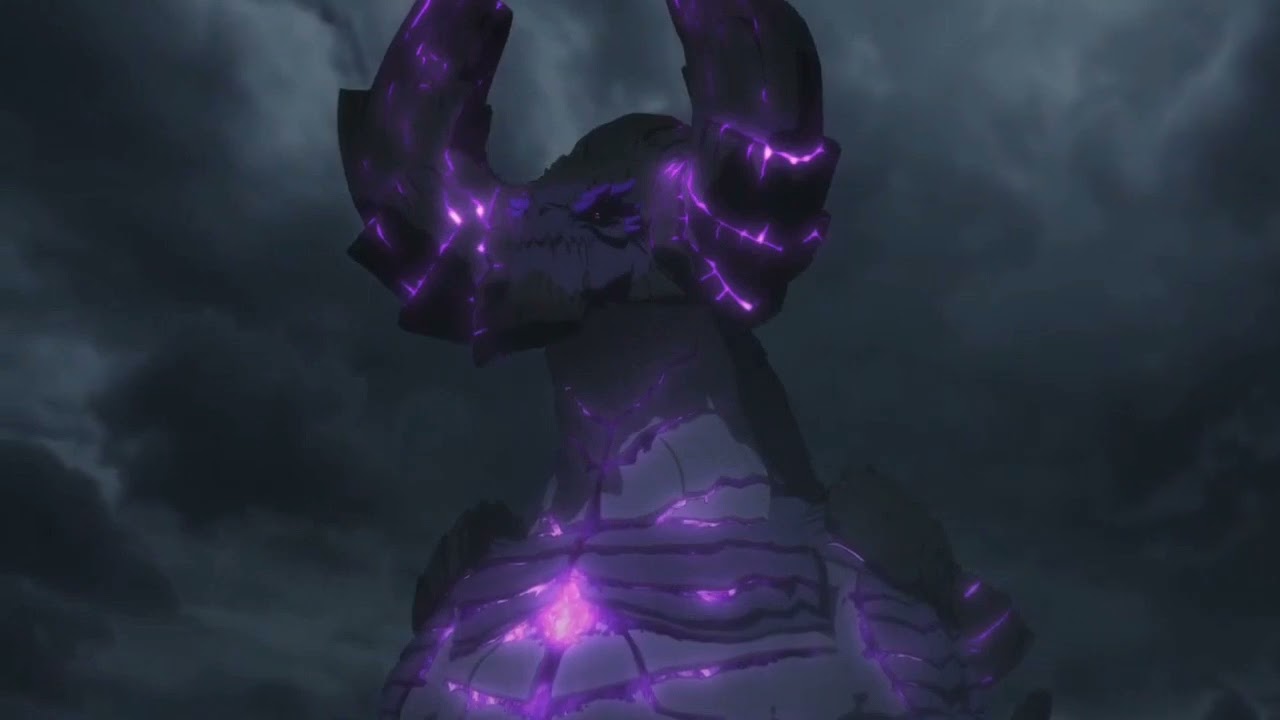
The Void Eldwurm in Dragon’s Blood is named Byssrak. He is the draconic representation of Enigma, the Fundamental of Gravity, one of the four Eldwurms that stand in for the four fundamental forces.
Byssrak and all the other void dragons, by extension, share some design elements with Enigma, such as comparable dark colour palettes and violet energy that seeps through the spaces between their scales. They have a tail club that is formed like a vase, which is one of their distinctive features. Although it has the same energy as their body, its function is uncertain. The void dragons first appear to be wingless, more so than even the vestigial-winged earth dragons, but their true wings eventually emerge from their shoulder plates as a kind of enigmatic violet energy.
Byssrak and the void dragons are capable of controlling gravity and space, based on the tools made from their remains. They can regulate their own gravity to enormously increase their own mass, enabling them to attack harder with their enormous tails and other appendages, which is how Kaden’s Blade, which can multiply his force exponentially, was created. The Dragon Knights also employ void dragon remains to craft their portal scrolls that allow them to teleport.
This could suggest that void dragons can also alter space in order to transfer themselves a long way. They are also able to suck people into their void and capture them with tendrils of the void that shoot out of their bodies. We see many of these powers on display when Viceroy Kashurra, a void dragon, engages Davion the Dragon Knight in battle for Princess Mirana in season 2.
Like all the other Eldwurms, Byssrak’s body might perish, but his soul is forever. It simply is reborn as another void dragon.
Indrak, the Ionic Eldwurm
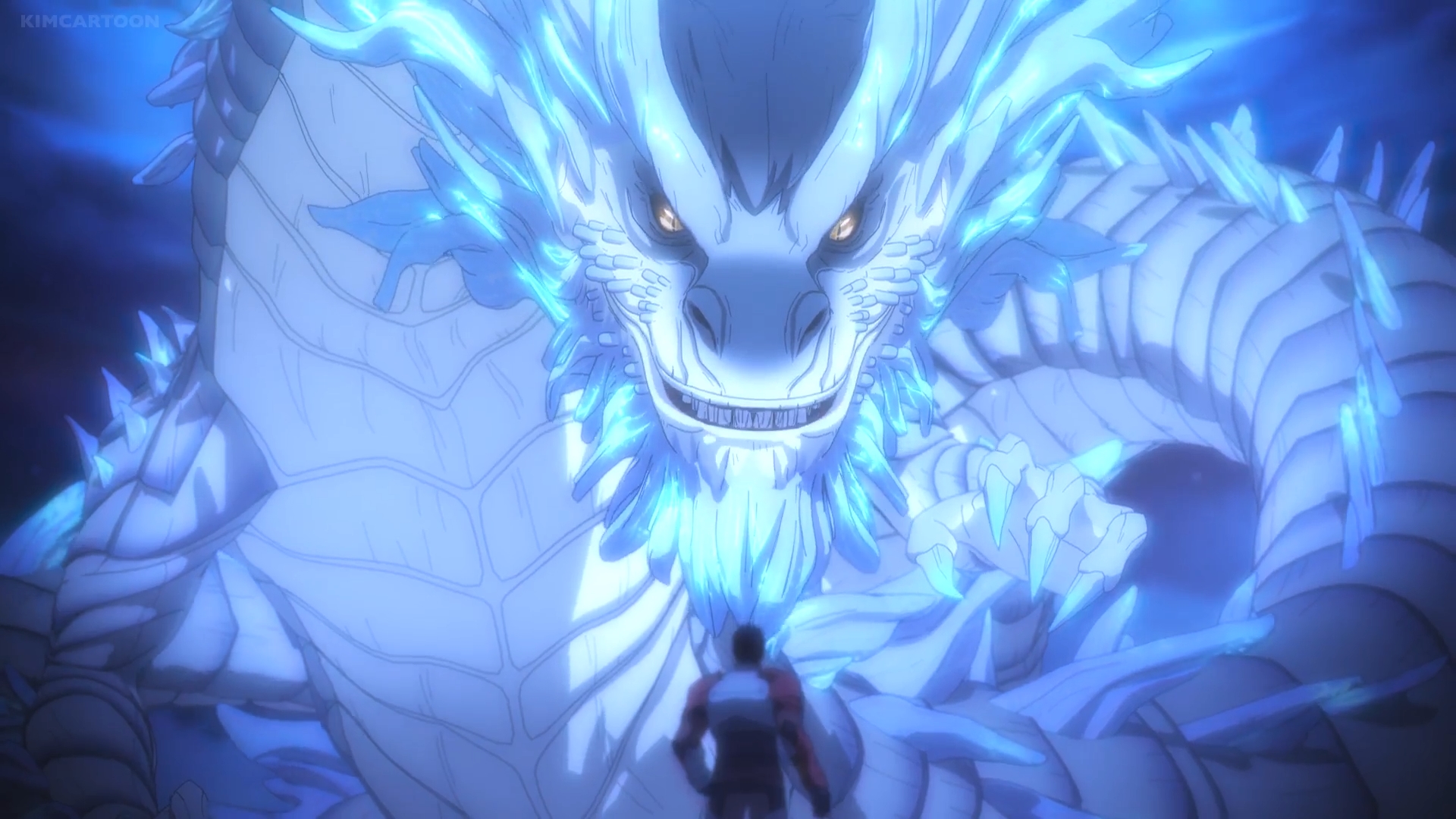
One of the eight pillars of creation, Indrak, is the Ionic Eldwurm whose soul sustains the cosmos. He is the draconic representation of Io, the Fundamental of Electromagnetism, one of the four Eldwurms that stand for the four fundamental forces. Indrak and the species he employs as vessels possess the power of electricity, just like the wisp. All ionic dragons are reported to speak exclusively in absolute truth, according to one claim. Interestingly, Indra, the ancient Indian god of lightning, thunder, and rain, inspired Indrak’s name and its lightning-related motif.
Indrak and the ionic dragons have bites that carry electricity, the elemental power of their particular dragon type. Thus, they wield their elemental power just like any other elemental dragon. Even after they pass away, this static power remains active, since even their skeletal remnants retain electrical qualities, which Kaden employs to great effect as an electroshock weapon. Ionic dragons cannot lie, according to Kaden, a dragon knight in the show. What this signifies is currently unknown, but who knows if it will be significant in upcoming seasons.
Indrak, like all Eldwurms, is immortal in the sense that he can take on new bodies each time he dies as long as one is available for his spirit to inhabit.
Lirrak, the Water Eldwurm
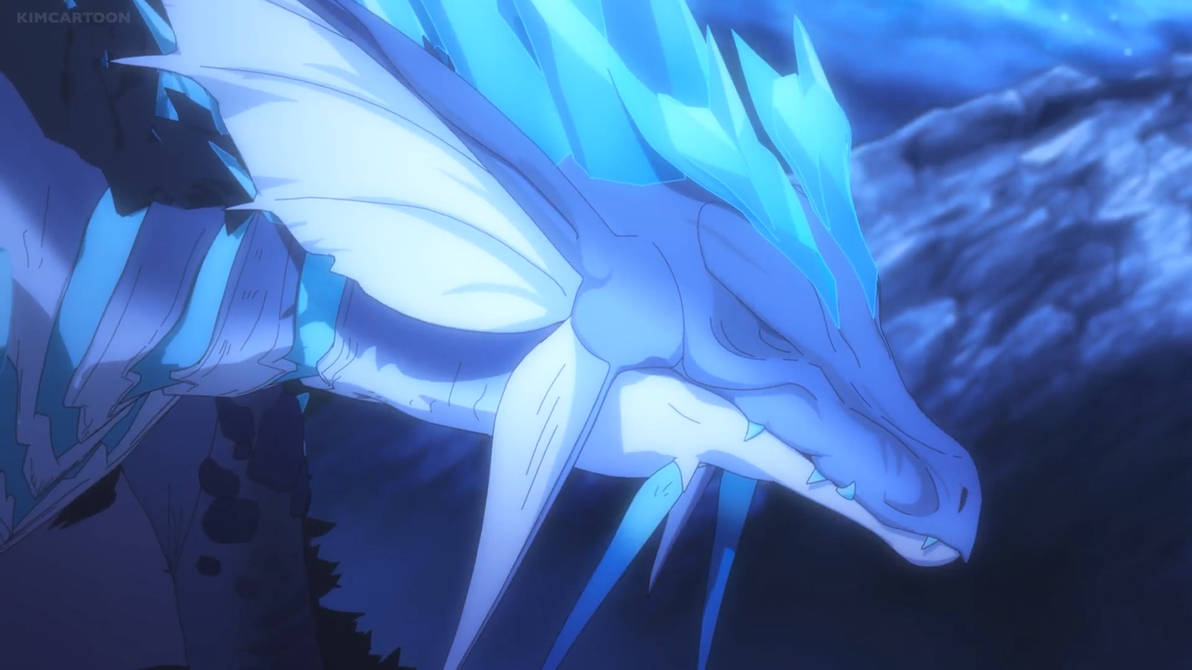
Lirrak, the Water Eldwurm, also goes by the names “Mother of Oceans” and “Mother of Storms,” and she has the ability to control all types of water. She resides on the summit of a cratered mountain beneath a lake, whose still waters are surrounded by a field of grass and flowers.
All water dragons presumably reside in water or near sources of water. Imagine an ancient Loch Ness monster – that is what I’m placing my bets on! We don’t see much of any water dragons all through the series, as most of the action takes place on land, so we only have a few clips of Lirrak herself to go off on. The features of Lirrak and thus, by extension, all the other water dragons, are quite aquatic in nature. She has webbed feet and blue skin that is reminiscent of the ocean, both tranquil and enraged.
As far as Lirrak herself is concerned, The Invoker was able to find the Eldwurm’s residence in the series. He then conjured his Wex orb to separate the waters and reveal the Eldwurm’s whereabouts underneath them, before enclosing the dragon inside of it. He was able to avoid Lirrak’s onslaught and effectively seal her once more with his Export orb, after she managed to break through the orb in retaliation.
She is also an Eldwurm herself and thus, Lirrak’s soul is immortal. As and when she dies, she will simply inhabit another water dragon body and the cycle will carry on.
Orrak, the Luminous Eldwurm
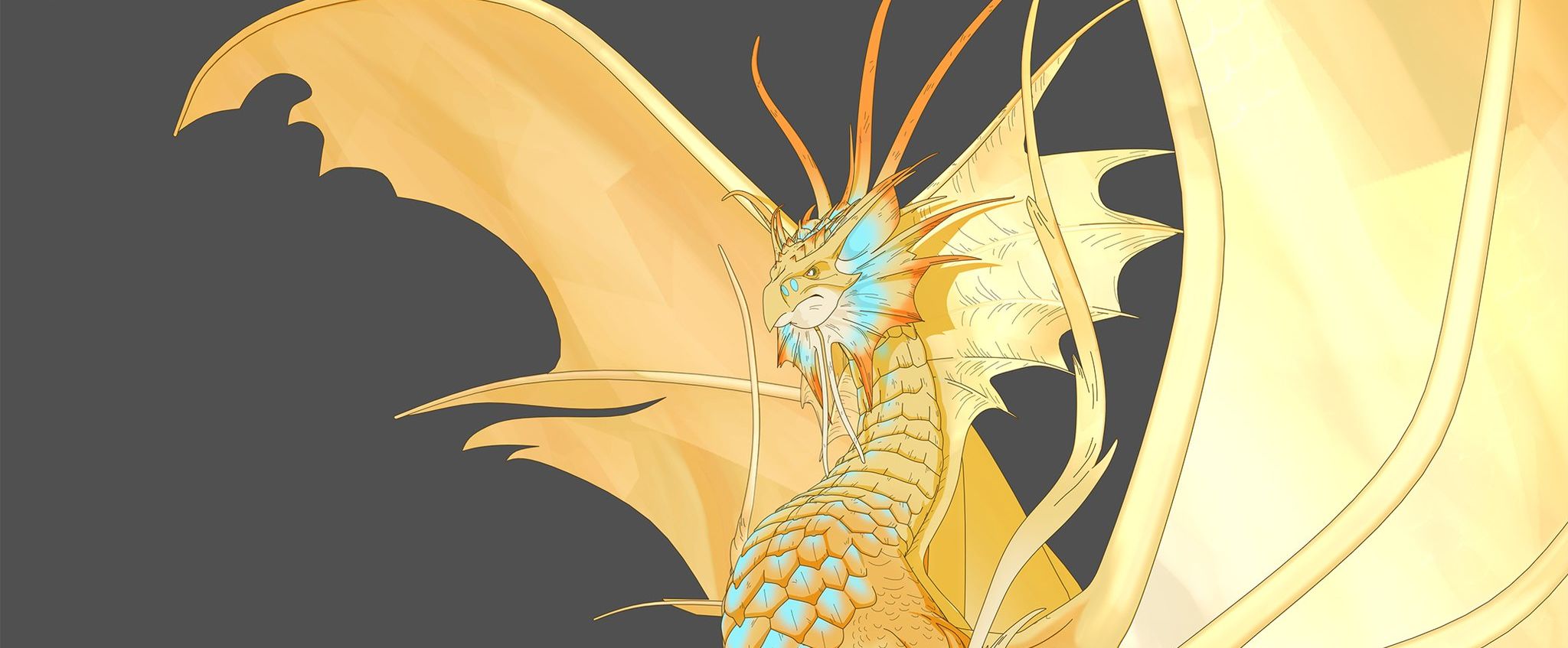
Not much is known about Orrak. The little that we do know is about her powers and the type of Eldwurm dragon she is. In fact, throughout the show, we don’t really see any Luminous dragon hatchling, wurmling or Eldwurm for that matter, apart from the one time we see Orrak, seated alongside the rest of the Eldwurms.
The Luminous Eldwurm, also known as Orrak or Aurrak, is one of the eight pillars of creation and the essence of the universe. She is equivalent to the Keeper of the Light among the four Eldwurms that stand in for the four fundamental forces, because she is the personification of light. However, she is also the embodiment of the strong nuclear force. She and all other luminous dragons are able to manipulate light, shadow and nuclear force.
Orrak and Aurrak are both allusions to her golden essence. Another name for the hue of gold is “Or,” which is frequently used in heraldry. Her other name Aurrak, may also be derived from “Au,” the chemical symbol for Aurum, the element gold.
Just like all the other Eldwurms, Orrak’s soul is also invincible and does not perish – it simply passes from one luminous dragon body to another.
Slyrak, the Fire Eldwurm
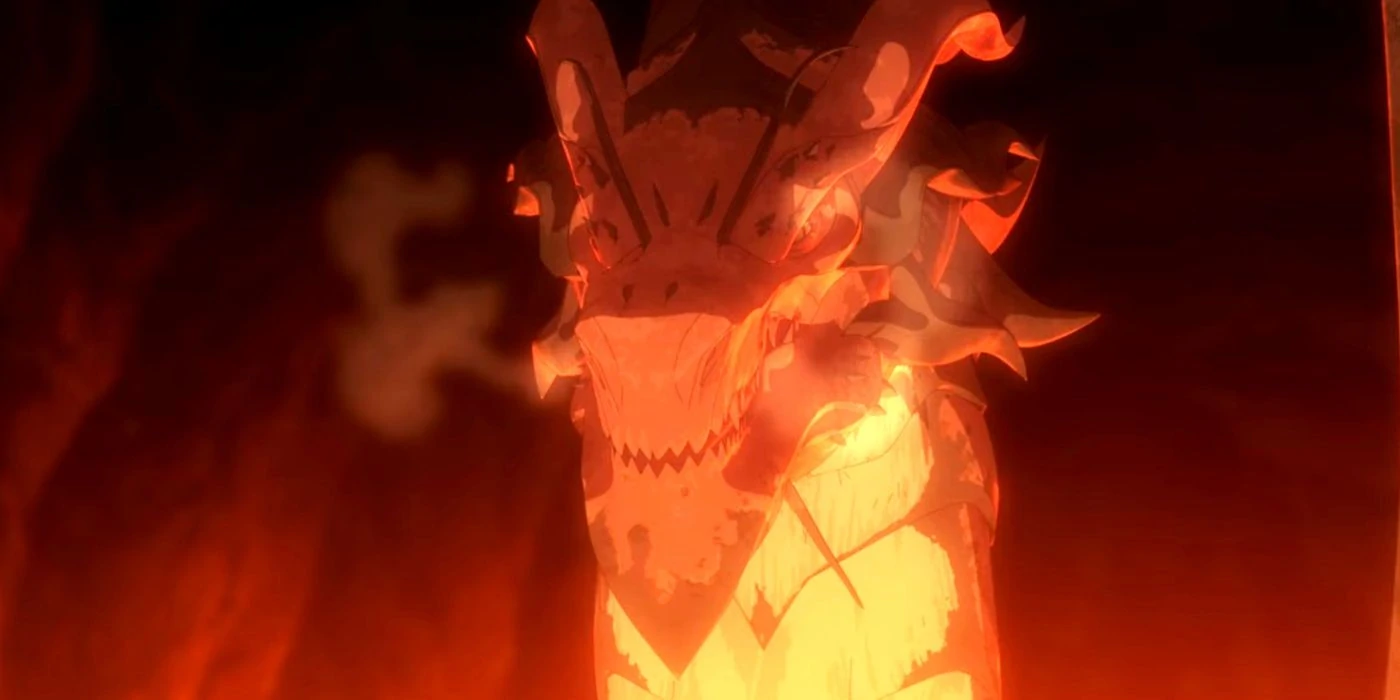
Slyrak is the fire or ember Eldwurm, otherwise called the Father of Fire. He is the most seen dragon in the entire show and is portrayed as being a gigantic beast with deep red scales and massive black talons, sharp enough to rip apart a human with a singular swipe. He also has a massive wingspan and the large ruby red wings are a scary sight indeed when one sees them approaching. He is best known for channelling his powers through the Blood Route and into Davion by spilling both of their blood and enabling them to mix, bonding his soul with Davion’s.
Slyrak and other fire dragons like him are all capable of breathing fire and are often seen burning entire villages to ash, setting fire to fields and people alike, as they massacre and gorge on humans. The fire dragons are often the ones that are most feared by humans and the ones that are etched in popular imagination and folklore as large fire-breathing beasts. In fact, Kaden and his fellow dragon knights were once victims of none other than Slyrak himself as he burnt down an entire village, slaughtering all the dragon knights apart from Kaden, who emerged as the sole survivor of the incident.
Slyrak, who is also an immortal soul and as seen in the series, prefers to house his soul in the human body of Davion rather than in fire dragons of his kind. He is also the only dragon who enters into a blood bond with a human.
Vahdrak, the Chaos Eldwurm
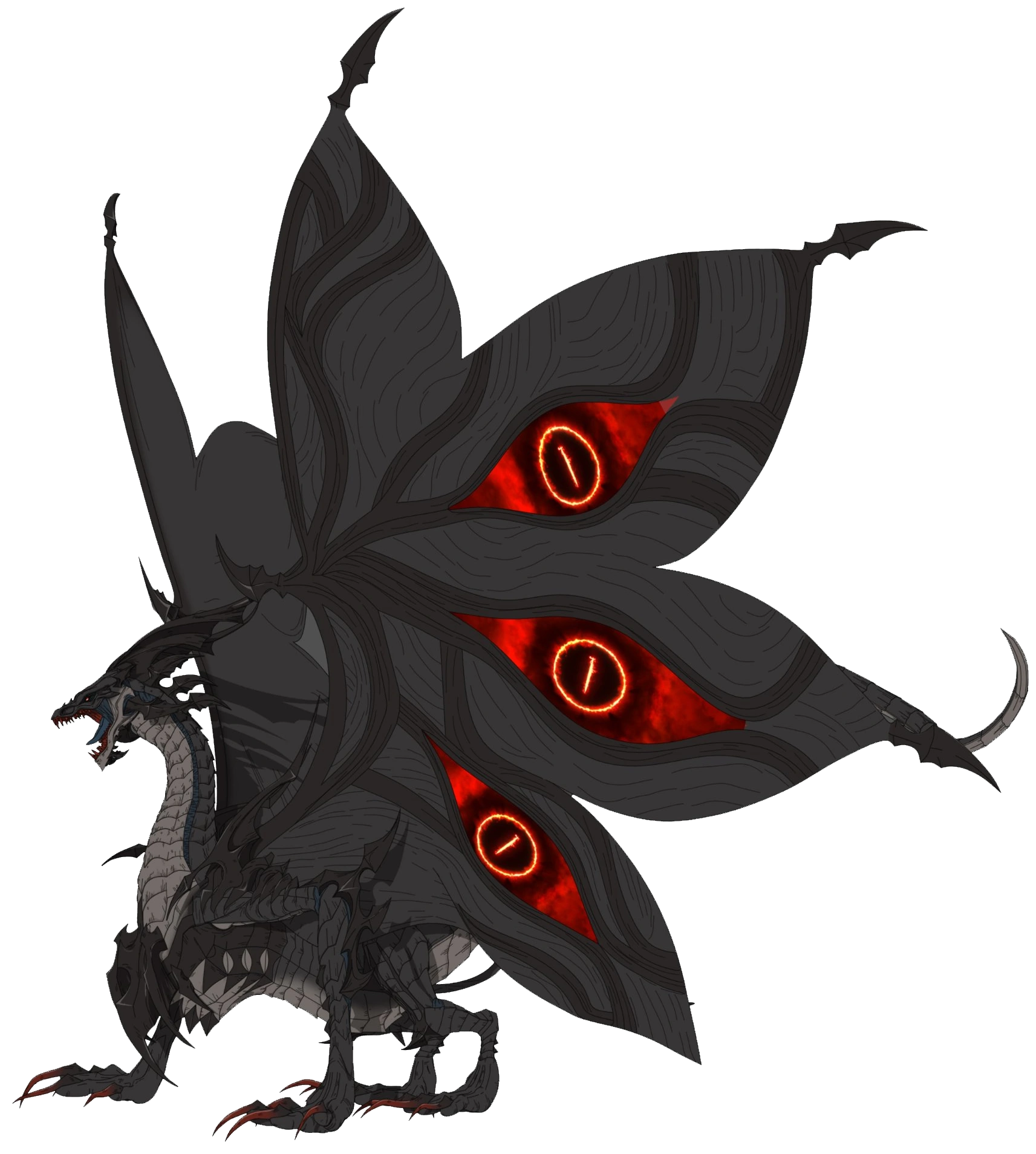
One of the eight pillars of creation, Vahdrak’s soul upholds the cosmos as the Chaos Eldwurm. He is one of the four Eldwurms that represent one of the four fundamental forces. He shares the same colour scheme and set of abilities as Chaos Knight, but he is actually the weak nuclear force, one of the four known fundamental interactions that cause things to decay.
Vahdrak and the other chaos dragons are distinguished by the three crimson eyes on their wings. These eyes can be uncovered when the dragon tries to terrify opponents or while employing some of its elemental powers. They are often hidden and tucked away under their wings.
The chaos dragons and Vahdrak have special talents that set them apart from other creatures. The majority of dragons utilise the elements or forces of nature, but some of them possess abilities that would make them eldritch beings – and these are the chaos dragons. It is challenging to even touch these dragons because of their ability to phase out of reality, deflect strikes surrounding them, and teleport small distances by switching between the planes. Kaden hunted these dragons specifically for their powers, imbuing a chaos dragon’s abilities into his armour.
Vahdrak appears to have the capacity to darken his surroundings before unleashing an expanding surge of red energy in addition to the ability to shift planes. Due to his control over atom decay through the weak contact, this strike is potent enough to dematerialize other eldwurms.
Vahdrak, like all Eldwurms, is immortal in the sense that he can take on new bodies as long as one is available for his spirit to inhabit. After passing away, he locates the subsequent oldest dragon of his species and infuses their empty physical form with his soul.
Uldorak, the Earth Eldwurm
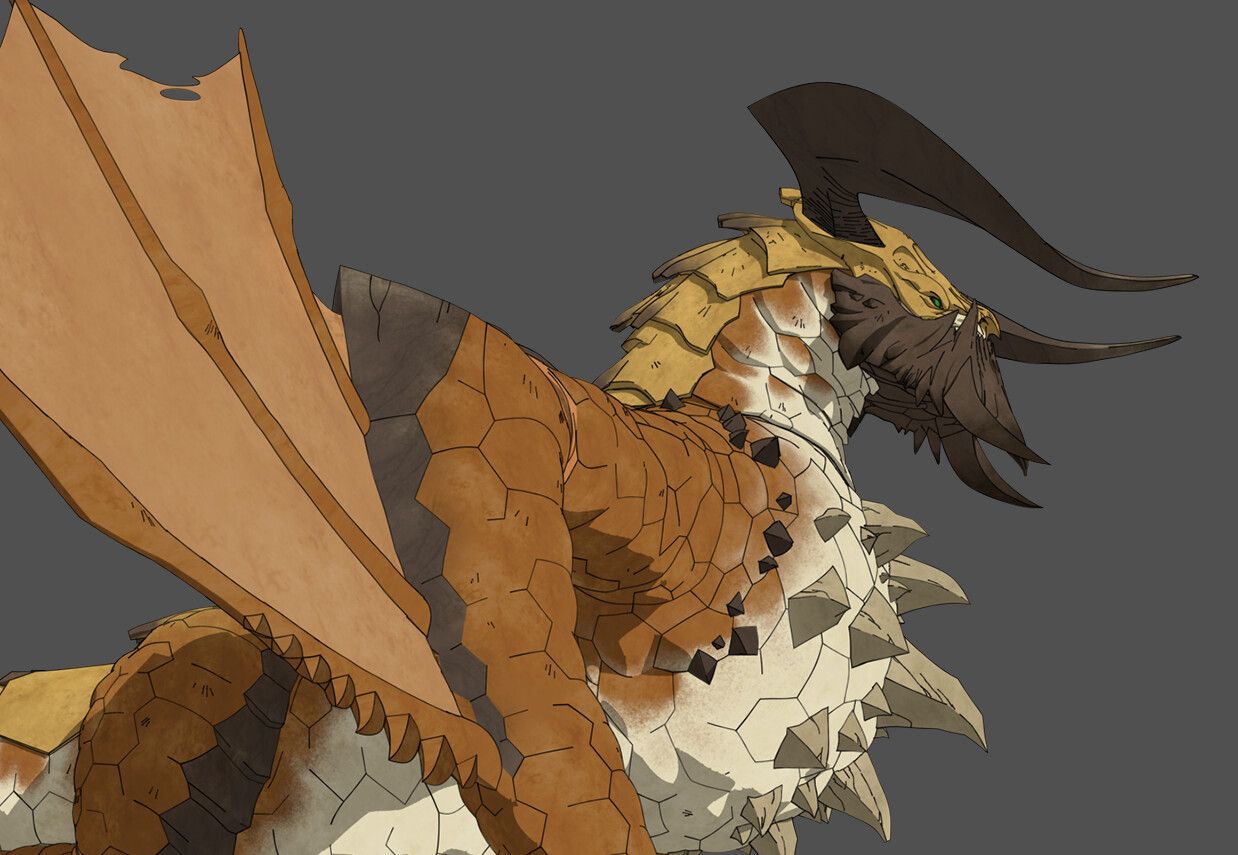
The Earth Eldwurm in Dota: Dragon’s Blood is named Uldorak. During the What the Thunder Said episode, Davion stumbled across Uldorak’s nest, and they were able to put him to sleep. The next day, Fruhling, who has been possessed by Terrorblade, kills him instead of Davion honourably putting the dragon to sleep. After taking his soul, Terrorblade later used Slyrak’s body to kill him.
Ashley Miller, the showrunner, claims that off-screen, Uldorak destroyed the kingdom of Candoness even though he was old and weak. Additionally, he claims that despite having a publicist who helped him spread the word about his abilities, he was simply a Time Dragon by name and had no connection to time itself. Additionally, he wore a large clock around his neck to complement his newly acquired title and demonstrate his age to others.
He, and other earth dragons often burrow under the Earth and have a thorny appearance. Apart from the first episode where we see Davion slay an earth wurmling, they don’t appear much during the series.
How important are dragons in DOTA: Dragon’s Blood?
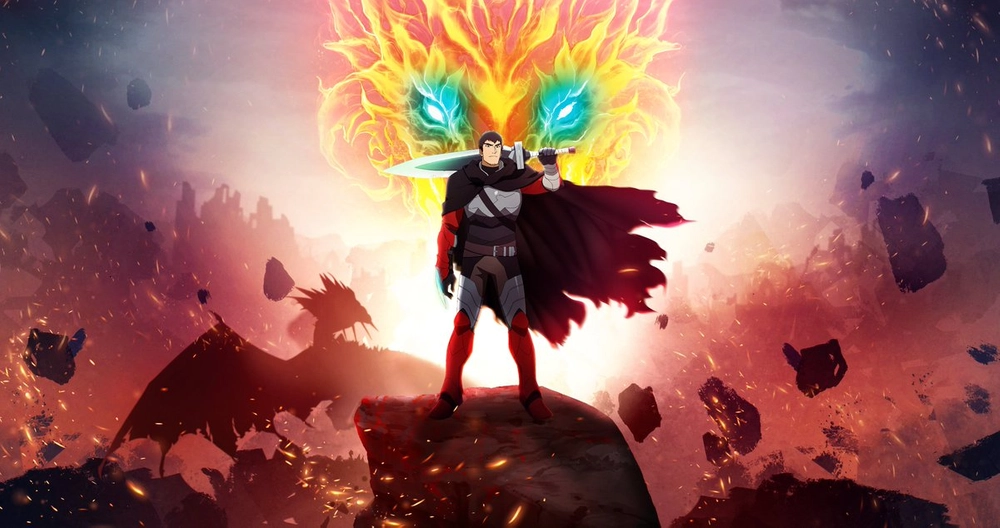
Considering the fact that Netflix’s DOTA: Dragons Blood centers around the demon Terrorblade, who embarks on a quest to kill all the Elder dragons one by one to collect and harvest their souls so that he may be able to remake all of creation using the powers inside their souls, dragons are immensely important in this fantasy world.
Further, As Davion’s soul fuses with one of the Eldwurms, Slyrak, The Father of Fire, it is impossible not to acknowledge the crucial role played by Davion and by extension, Slyrak, as they embark on their quest as a human-dragon hybrid. While the dragons are on occasion beaten by Terrorblade or The Invoker, a mage who does the demon’s dirty work for him – as souls and pillars of creation, when harnessed by Davion, they lend him the strength to be able to fight the demon.
In fact (warning: spoilers ahead!) it is with the help of these Eldwurms that Davion finally defeats and kills Terrorblade in the third season. They provide him with immense strength that also changes his entire physiology, making him a man-dragon hybrid much stronger than he was when only Slyrak’s soul resided within him.
To put it succinctly, dragons are extremely important in this series. If you haven’t watched the show yet, you will see a lot of dragons everywhere, all the time. If they’re not flying around in the sky, then it is Davion the Dragon Knight transforming into one and wreaking havoc on his enemies. All in all, they are an integral part of Dragons Blood lore – heck, they’re even mentioned in the title of the series! The designs that make each dragon visually distinct from all the others are stellar in this show – giving every Eldwurm and by extension, every type of dragon, a distinct personality.
Dragons have been portrayed in various pop culture favorites. But the way they are portrayed in DOTA: Dragons Blood is probably my favorite in a long time. The Eldwurms have character and personality, and the existence of dragons in this fantasy world is not just to add a couple of more predators to the food chain – they actually have an intrinsic purpose, and that makes them worthwhile. What do you think about the dragons in the series? Which one is your favorite? Let us know in the comments section below!
